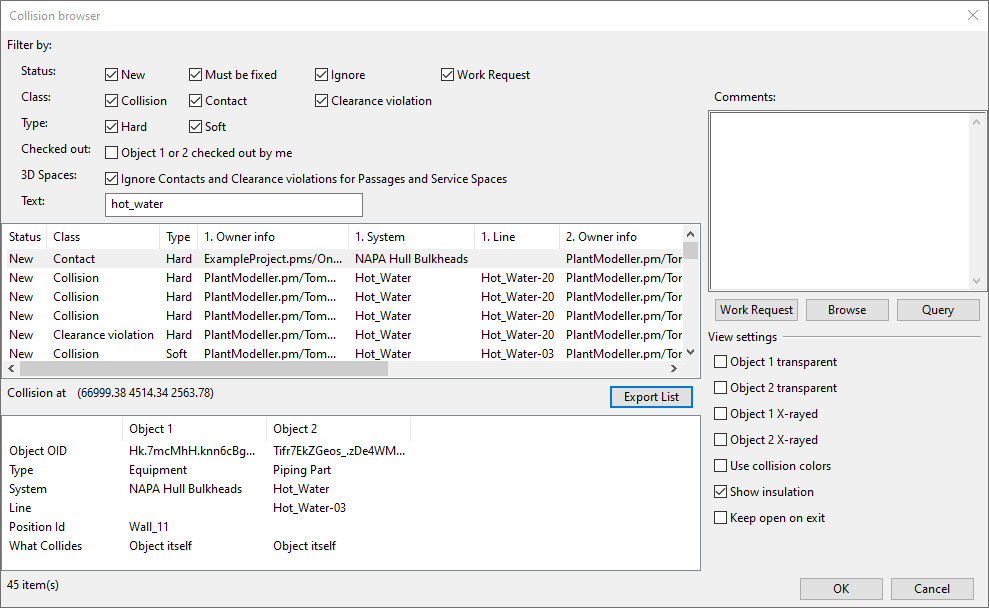Collision browser
In the Collision Test Definitions dialog, if you have run a collision test and it detected collisions, right-click the collision test and select Browse Collision Results. The Collision browser dialog opens, allowing you to examine the collisions, contacts, and clearance violations that the selected test case has found. That is, if two parts in the model are in contact but not intentionally connected, these contact points are marked as collisions, contacts or clearance violations, and they can be reviewed using the collision browser.
Note that the collision browser does not show cases where a contact or clearance violation can be expected and allowed, such as places where an onto-line duct part or onto-line piping part belongs to the same Support Group as the duct or pipe onto which the part is attached.

Selecting a collision from the collision list opens a new view (CollisionBrowserView) that shows the two objects that collide.
Use the View settings to control how the active collision is displayed:
-
Object 1 transparent, Object 2 transparent – Select whether to show the colliding objects as transparent.
-
Object 1 X-rayed, Object 2 X-rayed – Select whether to show the colliding objects as X-rayed.
-
Use collision colors – Select whether to show the clashing object as red and the clashed object as yellow, instead of using their normal colors.
-
Show insulation – Select whether to visualize insulation.
-
Keep open on exit – Select whether to keep the collision view should remain open when you close the collision browser
-
Show context objects – Select whether to visualize all the objects that have collision check results in the current check. If not selected, only the objects whose results are currently selected are shown in the view. (Only available when checking collisions in pipe spools or piping isometrics.)
Note: You can multi-select results in the collision browser. This allows, for example, creating work requests for the selected items.